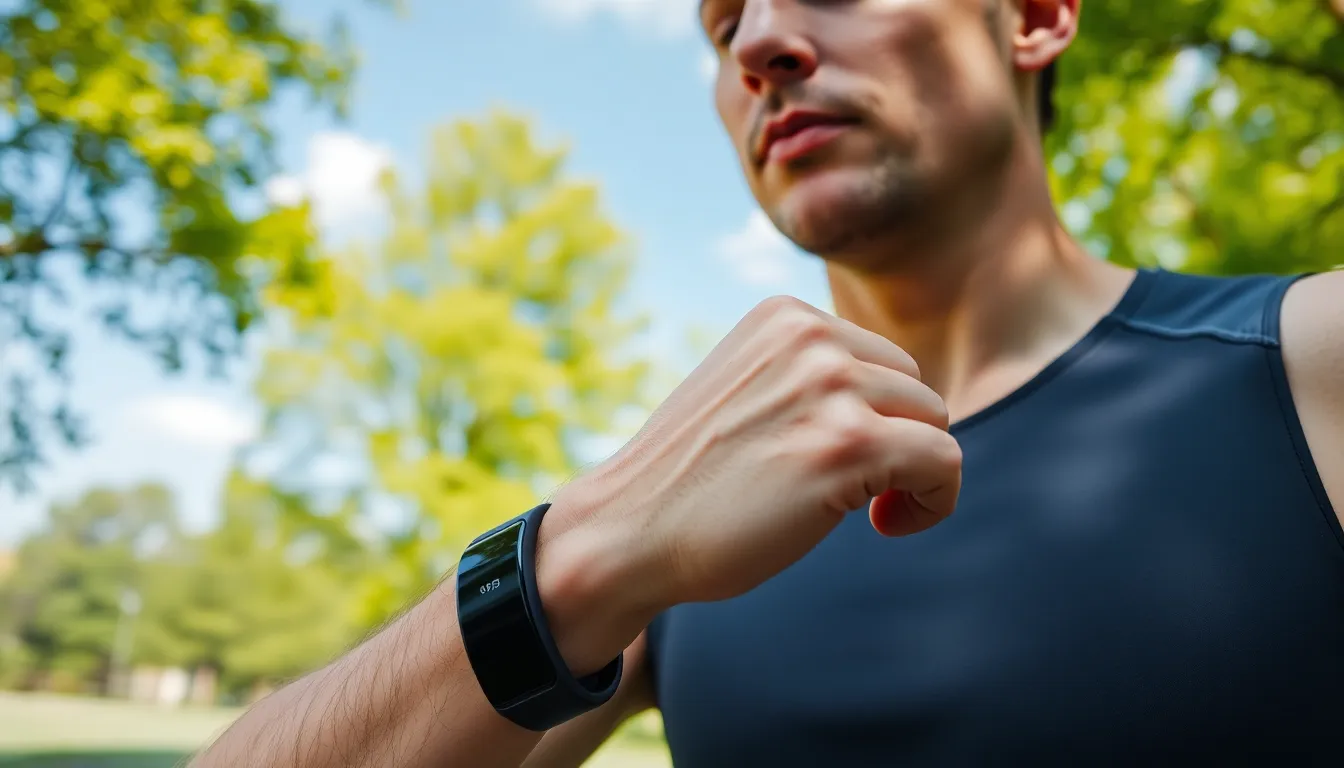Table of Contents
ToggleIn today’s fast-paced world, wearable devices have become essential tools for many. From fitness trackers to smartwatches, these gadgets seamlessly integrate technology into daily life, empowering users to monitor health, stay connected, and enhance productivity. As they evolve, wearable devices are not just about convenience; they’re transforming how people interact with their surroundings.
With advancements in technology, these devices are getting smarter and more versatile. They now offer features like heart rate monitoring, sleep tracking, and even GPS navigation. This article explores the latest trends in wearable technology, highlighting how these innovations are shaping personal wellness and connectivity. Whether you’re a tech enthusiast or just curious, understanding the impact of wearable devices can inspire a more informed approach to health and lifestyle choices.
Overview of Wearable Devices
Wearable devices encompass a variety of technology that users carry or wear on their bodies. Examples include fitness trackers, smartwatches, smart glasses, and wearable medical devices. These gadgets seamlessly integrate with users’ daily lives, providing essential functions that enhance health monitoring, communication, and productivity.
Types of Wearable Devices
- Fitness Trackers
Fitness trackers monitor physical activities, such as steps taken, distance traveled, calories burned, and sleep quality. Popular models include Fitbit Charge and Garmin Vivosmart.
- Smartwatches
Smartwatches combine traditional watch functionality with smartphone features. They provide notifications, manage calls, and track fitness metrics. Notable examples consist of Apple Watch and Samsung Galaxy Watch.
- Smart Glasses
Smart glasses offer augmented reality experiences and display information hands-free. Devices like Google Glass and Microsoft HoloLens allow users to interact with digital content while maintaining their environment.
- Wearable Medical Devices
Wearable medical devices aid in health management by monitoring vital signs such as heart rate, glucose levels, and blood pressure. Examples include continuous glucose monitors (CGMs) and portable ECG monitors.
Market Trends
The wearable device market has experienced significant growth, with a 20% increase in shipments from 2021 to 2022, as reported by IDC. Key trends include:
- Health Monitoring
Advanced health tracking capabilities including ECG, blood oxygen levels, and sleep stages enable users to gain insights into their wellness.
- Integration with IoT
Wearable devices often connect to smart home systems and smartphones, enhancing user experience through ecosystem connectivity.
- Fashion and Style
Modern designs focus on aesthetics, appealing to users who prioritize fashion alongside functionality.
By blending convenience and technology, wearable devices significantly impact daily lifestyles, encouraging active living and informed choices.
Types of Wearable Devices

Wearable devices come in various forms, each designed to meet specific user needs. The following sections detail the primary categories of wearable technology.
Fitness Trackers
Fitness trackers monitor physical activity levels, heart rates, and sleep quality. These devices track steps, calories burned, and distance traveled, providing users with valuable insights into their fitness routines. Popular examples include Fitbit and Garmin models, which come equipped with features such as GPS tracking and exercise-specific modes. Reports show that fitness trackers can improve motivation and accountability, making them essential for those aiming for fitness goals.
Smartwatches
Smartwatches combine traditional wristwatch functionality with smartphone capabilities. These devices offer notifications for calls, messages, and apps directly on the wrist. Advanced models include features like music control, navigation, and even mobile payments. Notable brands such as Apple and Samsung lead the smartwatches market, offering a variety of styles and functionalities. Their versatility enhances user connectivity while providing health monitoring features like heart rate tracking and fitness apps.
Health Monitors
Health monitors focus on specific medical needs, assisting users in tracking vital signs and managing chronic conditions. These devices include wearable ECG monitors, glucose monitors, and blood pressure tracking devices. Companies like Abbott and BioTelemetry manufacture specialized health monitors for patients with specific health issues. By providing real-time data and alerts, health monitors enhance personal health management and support timely medical interventions.
Key Features of Wearable Devices
Wearable devices are equipped with several key features that enhance their functionality and user experience. These features range from connectivity options to user interface design, allowing users to make informed choices.
Connectivity
Wearable devices utilize various connectivity options to enhance functionality. Bluetooth serves as the primary method for connecting wearables to smartphones, enabling seamless data synchronization and notifications. Wi-Fi connectivity provides additional opportunities for software updates and access to online services. Some devices incorporate cellular connectivity, allowing users to make calls and send messages independently of their smartphones. Devices equipped with NFC (Near Field Communication) support contactless payment options, making transactions quick and convenient.
Battery Life
Battery life significantly impacts the usability of wearable devices. Most fitness trackers offer between 5 to 15 days of battery life, depending on usage and features. Smartwatches typically range from 1 to 3 days due to their advanced functionalities, like GPS tracking and notifications. Recent advancements, including solar charging and energy-efficient components, contribute to extending battery life. Manufacturers are continually optimizing battery performance, helping users avoid frequent recharging and improving overall satisfaction.
User Interface
User interface design plays a crucial role in the usability of wearable devices. Touchscreen displays commonly facilitate user interaction, allowing for intuitive navigation and quick access to features. Gesture controls enhance user experiences, allowing users to manage functions without direct touch. Voice recognition capabilities provide hands-free convenience, enabling commands and inquiries. Customizable watch faces and application layouts further personalize user experiences, making devices more adaptable to individual preferences.
Benefits of Wearable Devices
Wearable devices offer numerous advantages that enhance daily life, particularly in health, convenience, and data management. These benefits position wearable technology as a key component for modern wellness and productivity.
Health and Fitness Tracking
Wearable devices excel in health and fitness tracking, providing real-time data on various physical activities. Devices like fitness trackers record steps taken, calories burned, and heart rates, effectively encouraging users to meet their fitness goals. Smartwatches further enhance tracking capabilities by monitoring sleep patterns and offering reminders for physical activity. These insights empower individuals to make informed decisions about their health, fostering accountability and motivation in their fitness journeys.
Convenience and Accessibility
Wearable devices improve convenience and accessibility by integrating various functionalities into a compact format. Users can receive notifications, control music, and access apps directly from their wrists without needing to reach for their smartphones. This seamless connectivity allows for quick interactions while on the go. Additionally, many wearable devices offer voice-activated features, enabling users to manage tasks hands-free, which significantly enhances efficiency in busy lifestyles.
Data Collection and Analysis
Wearable devices collect extensive data that aids in personal health management and lifestyle analysis. By monitoring vital signs such as heart rate and activity levels, these devices help users track trends over time. Advanced analytics can identify patterns in user behavior, allowing for tailored fitness recommendations and health insights. Integration with health apps further enhances the ability to visualize this data, equipping users with the knowledge required to make informed health choices and improvements in their daily habits.
Challenges and Considerations
Wearable devices offer numerous benefits, but they also face challenges that require careful consideration. These challenges range from privacy issues to the complexities of integrating with other technologies.
Privacy Concerns
Privacy concerns represent a significant challenge for wearable device users. Devices collect sensitive data, including health metrics, location information, and personal preferences. Users may not fully understand how their data is stored, used, or shared, leading to potential breaches of privacy. Statistics indicate that 60% of consumers worry about unauthorized access to their health data. Companies must prioritize robust security measures, such as encryption and user consent protocols, to safeguard personal information.
Integration with Other Technologies
Integration with other technologies presents both opportunities and difficulties for wearable devices. While interoperability enhances user experience by facilitating seamless communication between devices, it can also pose technical challenges. Compatibility issues may arise, particularly when connecting to various operating systems or platforms. Research shows that 70% of users expect their wearables to work effortlessly with smartphones, smart home devices, and health apps. Ensuring smooth integration requires ongoing collaboration between manufacturers and software developers to create standardized protocols and improve user accessibility.
Wearable devices have become integral to modern life by enhancing health monitoring and promoting active lifestyles. Their ability to seamlessly integrate various functionalities into one compact gadget empowers users to make informed decisions about their well-being. As technology continues to evolve, these devices will likely offer even more advanced features and improved user experiences.
While the benefits are significant, users must remain vigilant about privacy and security concerns. The ongoing collaboration between manufacturers and software developers is crucial for ensuring compatibility and user accessibility. With the right advancements and considerations, wearable devices will continue to shape the future of personal health and productivity.







